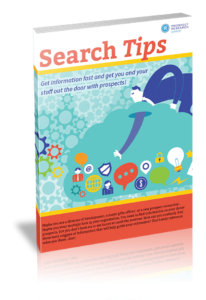 Did you know that International Women’s Day is March 8, 2018? Get ready! In honor of women, the Day, and with some recent inspiration from a #FemaleFund Tweet-up hosted by Preeti Gill (@SoleSearcherPR) and Vanessa Chase (@vanessaechase), I thought I’d depart from the usual and have a little bit of tongue-in-cheek fun!
Did you know that International Women’s Day is March 8, 2018? Get ready! In honor of women, the Day, and with some recent inspiration from a #FemaleFund Tweet-up hosted by Preeti Gill (@SoleSearcherPR) and Vanessa Chase (@vanessaechase), I thought I’d depart from the usual and have a little bit of tongue-in-cheek fun!
You see, during the Tweet-up I mentioned that my biggest challenge in researching women is that the traditional public sources are weak on information about them. Sarah Bernstein (@srbernstein) mused that since prospect research, like other fundraising careers, is still mostly done by women, are we creating many of our own biased tools?
And the seed to the Women’s Hack Guide to Prospect Research was planted!
(Don’t worry, men, you can read this, too, and still get some great search ideas.)
Preparing for Your Day
- Make some coffee.
- Review/write your task list for the day, incorporating meetings on your calendar and when you’ll accomplish household errands in between everything else (because you pass the dry cleaning on your way to the library where the book you requested is waiting, and you can finally return your child’s overdue library book, which you found when you were cleaning this weekend).
- Mentally separate tasks that require deep focus and those that you can do while chatting with someone who stops by your desk (including updating the database record while the gift officer tells you about her visit with the prospect you just researched).
- Sip your coffee and start your research!
Shifting to Inclusive Research
- Using the “inside-out” approach, efficiently work through the usual tools, collecting information, but then, regardless of the level of profile, stop and shift to one or two alternative or less traditional search approaches.
- Document your alternative search strategies to keep track of what works as you proceed with your research, such as the following:
Female Spouse

Male Spouse
- Social media is sizzling for you today! Add the social media sites to your bookmarks, especially if there is a separate search page.
- Download a few articles and blog posts about Instagram and Pinterest onto your tablet because you don’t have your own account on them – yet! (and you know you’ll have at least a 30-minute wait when you take your teenager to the doctor’s office later this week – they are never on time.)
- Make more coffee! (or switch to tea)
Winding Up Your Day
- Hand-deliver the prospect profile to the gift officer because you know he’s excited about his upcoming meeting in the couple’s home. When you mention that the woman was a marketing executive and he dismisses it, listen as you weave the story about why it’s important (The giving is either in her name individually or as a couple, suggesting she is the philanthropic driver in the household. She held a top position at the marketing firm and would probably be a great fit for and open to serving on our development board, while her husband appears overstretched serving on multiple company boards building his career. The children are teenagers and she might be thinking about what she wants to do next – it’s good timing!)
- Make a mental note to add information like that to the profile next time!
- Pat your back because you just advocated for a woman AND put your organization in a better position to deepen its relationship with a donor.
- Finish your last cup of coffee before the commute (race) home begins.
Additional Resources
- International Women’s Day 2018 campaign theme: #PressforProgress #IWD2018
- Women’s Philanthropy Institute at Indiana University | Research, Courses, and more
- Prospect Research Institute’s What About Women? links collection
- Graham Pelton Resources | We’re on a mission to break the giving glass ceiling
 Imagine you emerge from a strategic planning session and your task is to raise more money from corporations. Your organization wants to expand its reach and you need to take the thousands of corporate donors in the database and transform them into a fundraising program. Why? Because everyone “feels” like there is a lot of opportunity there. Where do you start?
Imagine you emerge from a strategic planning session and your task is to raise more money from corporations. Your organization wants to expand its reach and you need to take the thousands of corporate donors in the database and transform them into a fundraising program. Why? Because everyone “feels” like there is a lot of opportunity there. Where do you start? “I need a profile on this person today…can’t you just Google it?” It’s the kind of question that makes prospect research professionals cringe. But why shouldn’t a development officer want it faster, better, and cheaper? Why is your organization paying thousands of dollars a year for research tools if it still takes forever to get the information needed?
“I need a profile on this person today…can’t you just Google it?” It’s the kind of question that makes prospect research professionals cringe. But why shouldn’t a development officer want it faster, better, and cheaper? Why is your organization paying thousands of dollars a year for research tools if it still takes forever to get the information needed? In this wonderful era of exciting, off-the-shelf prospect research tools and one-click-away data analysis, how is it that we still struggle to prioritize our donors and prospects? But we do. The results come in, the scores are assigned and yet there are still way more highly-rated prospects than our staff could possibly contact. Which names do we call on first?
In this wonderful era of exciting, off-the-shelf prospect research tools and one-click-away data analysis, how is it that we still struggle to prioritize our donors and prospects? But we do. The results come in, the scores are assigned and yet there are still way more highly-rated prospects than our staff could possibly contact. Which names do we call on first?



 Have you ever been in a conversation with someone that felt like an argument or debate, but it turned out you were both saying the same thing, just differently? I had one supervisor where this happened quite a bit before we realized what was happening. Many times the very skills that make great frontline fundraisers and great fundraising researchers translate into two very different languages!
Have you ever been in a conversation with someone that felt like an argument or debate, but it turned out you were both saying the same thing, just differently? I had one supervisor where this happened quite a bit before we realized what was happening. Many times the very skills that make great frontline fundraisers and great fundraising researchers translate into two very different languages! March is always an interesting month – International Women’s Day and now
March is always an interesting month – International Women’s Day and now  Do you dream of creating the perfect prospecting system? A system so flawless that the ratio of prospects to donors drops to 2:1 or even (gasp) 1:1? I do! And yet, barring advances in ESP, a 1:1 ratio feels quite out of reach. We simply don’t have access to people’s complex, internal motivations for giving until they get visited and share. Even so, we still have plenty of room to achieve better prospect-to-donor ratios.
Do you dream of creating the perfect prospecting system? A system so flawless that the ratio of prospects to donors drops to 2:1 or even (gasp) 1:1? I do! And yet, barring advances in ESP, a 1:1 ratio feels quite out of reach. We simply don’t have access to people’s complex, internal motivations for giving until they get visited and share. Even so, we still have plenty of room to achieve better prospect-to-donor ratios. Public companies create an enormous amount of wealth in the United States. Having the designation as a public company insider is a neon-lit indicator for high net worth!
Public companies create an enormous amount of wealth in the United States. Having the designation as a public company insider is a neon-lit indicator for high net worth!
 Whether it’s a personal story or a media headline, we’ve all heard of incidents where data was mishandled or misunderstood and donors felt betrayed. And yet, many development and advancement offices continue to place little value on their information and data.
Whether it’s a personal story or a media headline, we’ve all heard of incidents where data was mishandled or misunderstood and donors felt betrayed. And yet, many development and advancement offices continue to place little value on their information and data.